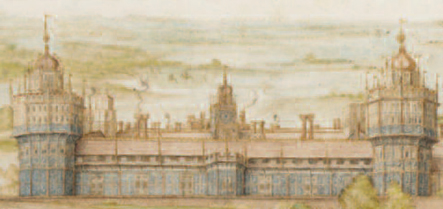
Discover Your Ancestors
Two critically acclaimed publications are available to family history researchers - the annual print magazine, Discover Your Ancestors, and the monthly online magazine, Discover Your Ancestors Periodical. Click here to subscribe.Surrey

During the 5th and 6th centuries Surrey was conquered and settled by Saxons. In the 7th century, it became a frontier area disputed between the kingdoms of Kent, Essex, Sussex, Wessex and Mercia, until its permanent absorption by Wessex in 825.
After the Battle of Hastings, the Norman army advanced through Kent into Surrey, where they defeated an English force which attacked them at Southwark, before proceeding westwards on a circuitous march to reach London from the north-west. During King John’s struggle with the barons, Magna Carta was issued in June 1215 at Runnymede in Surrey.
Surrey had little political or economic importance in the Middle Ages. It was not the main power-base of any major aristocratic family or the seat of a bishopric. Its agricultural wealth was limited by its soil varieties. Its forested North Downs and the Wealden plain were of timber, charcoal and hunting use. Significant prosperity focused in the later Middle Ages on the production of woollen cloth, England’s main export industry, which in Surrey saw much of its manufacture in Guildford.
Surrey’s cloth industry declined in the 16th century, and effectively collapsed in the 17th. The introduction of new furnace technology in the early 17th century led to a brief expansion of the iron industry in the Weald, until the mines were worked out. This period also saw the emergence of important new industries, centred on the valley of the Tillingbourne. The production of brass goods and wire in this area was relatively shortlived, but the manufacture of paper and gunpowder proved more enduring. For a time in the mid-17th century the Surrey mills were the main producers of gunpowder in England. The Wey Navigation, opened in 1653, was one of England’s first canal systems.
Surrey almost entirely escaped the direct impact of fighting during the main phase of the English Civil War in 1642-6, but had a prominent role in the development of the radical political movements unleashed by the civil war. In October 1647 the first manifesto of what became known as the Leveller movement was drafted at Guildford.
Until the late 18th century Surrey, apart from its north-eastern corner, was sparsely populated and somewhat rustic, despite its proximity to the capital. Communications began to improve, and the influence of London to increase, with the development of turnpike roads and a stagecoach system. A far more profound transformation followed with the arrival of the railways, beginning in the late 1830s. Commuting brought explosive growth to Surrey’s population and wealth, and tied its economy and society inextricably to London.
In 1849 Brookwood Cemetery was established near Woking to serve the population of London, connected to the capital by its own railway service. It soon developed into the largest burial ground in the world. Woking was also the site of Britain’s first crematorium, opened in 1878.
Exclusive census analysis from the data at TheGenealogist.co.uk reveals that common Surrey surnames include Baker, King, Turner, Cooper, Knight, Martin and Hill; plus Lee, Stevens, Young and Woods were common in 1841, as were Harris and Clark in 1911.
Surrey Records Online
Leading data website TheGenealogist.co.uk has a wealth of records for Surrey. Here is a quick run-down of what you can find (in addition to national collections):
- Trade directories: 1839 Surrey Pigot’s Directory and 1938 Surrey Kelly’s Directory.
- Census records: Surrey records for every census from 1841 to 1911.
- Parish registers for around 25 parishes (see www.thegenealogist.co.uk/coverage/parish-records/surrey/).
- Nonconformist registers: Nonconformist chapels and meeting houses in Surrey are covered in the site’s collections.
- Land owners: the site’s huge new collection of tithe commutation records includes Surrey; plus an 1873 survey of English landowners includes the county.
- The site’s free image archive has many old photos of places in Surrey.
- School registers for Epsom College Register and Whitgift Grammar School.
- An index of wills, 1484-1490.
- Medieval visitations from 1530 and 1662-68.